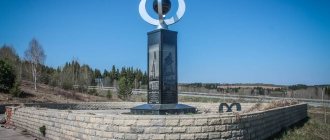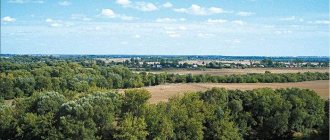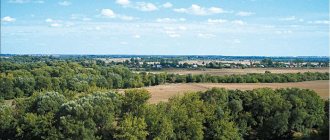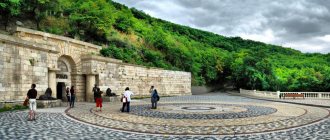What holiday is it today?
December 16, 2021, Thursday
Today are holidays, events: Events that happened on December 16 in the world, in different years Tomorrow: Day of Strategic Missile Forces Day of Employees of the State Courier Service Memorable date in the military history of Russia: Capture of the Ochakov fortress in 1788
Today is the Orthodox holiday of the Prophet Zephaniah. Reverend Savva of Storozhevsky, Zvenigorod. Martyr Angelis... Tomorrow: Great Martyr Barbara and Martyr Juliania of Iliopolis. Venerable John of Damascus...
Today is a national holiday: Day of World Silence and Silence... Tomorrow: Barbarian Day...
Seasons
Seasons, four periods of the year (spring, summer, autumn and winter) characterized by certain average temperatures. The period during which the Sun passes through one of these sectors is called the season. Spring in the Northern Hemisphere and autumn in the Southern Hemisphere begin when the Sun passes through the initial circle of declination and its right ascension is 0° (vernal equinox). Summer in the Northern Hemisphere and winter in the Southern Hemisphere occur when the sun's right ascension is 90° (summer solstice). Autumn in the Northern Hemisphere and spring in the Southern Hemisphere begin when the sun's right ascension is 180° (autumnal equinox). The beginning of winter in the Northern Hemisphere and summer in the Southern Hemisphere is considered to be the winter solstice, when the direct ascension of the Sun is 270°... Next: Seasons. Russian folk calendar. Monthly words...
Distance tables of Russian regions
- Distance between cities of Adygea
- Distance between cities of Altai Territory
- Distance between cities of the Amur region
- Distance between cities in Arkhangelsk region
- Distance between cities of the Astrakhan region
- Distance between cities of Bashkortostan
- Distance between cities in Belgorod region
- Distance between cities in Bryansk region
- Distance between cities in Vladimir region
- Distance between cities in Volgograd region
- Distance between cities in the Vologda region
- Distance between cities in Voronezh region
- Distance between cities in Dagestan
- Distance between cities of the Jewish Autonomous Region
- Distance between cities of Trans-Baikal Territory
- Distance between cities of Ivanovo region
- Distance between cities in Ingushetia
- Distance between cities in Irkutsk region
- Distance between cities of Kabardino-Balkaria
- Distance between cities of the Kaliningrad region
- Distance between cities in Kalmykia
- Distance between cities in Kaluga region
- Distance between cities in Kamchatka Krai
- Distance between cities Karachay-Cherkessia
- Distance between cities in Kemerovo region
- Distance between cities in Kirov region
- Distance between cities in Kostroma region
- Distance between cities in Krasnodar region
- Distance between cities of Krasnoyarsk Territory
- Distance between cities of Kurgan region
- Distance between cities in Kursk region
- Distance between cities in Leningrad region
- Distance between cities in Lipetsk region
- Distance between cities of Magadan region
- Distance between cities Mari El
- Distance between cities in Mordovia
- Distance between Moscow cities
- Distance between cities in the Moscow region
- Distance between cities in Murmansk region
- Distance between cities of the Nenets Autonomous Okrug
- Distance between cities in Nizhny Novgorod region
- Distance between cities of Novgorod region
- Distance between cities of the Novosibirsk region
- Distance between cities of Omsk region
- Distance between cities in Orenburg region
- Distance between cities in Oryol region
- Distance between cities in Penza region
- Distance between cities in Perm Krai
- Distance between cities in Primorsky Krai
- Distance between cities of Pskov region
- Distance between cities of the Altai Republic
- Distance between cities of the Republic of Buryatia
- Distance between cities of the Republic of Karelia
- Distance between cities of the Komi Republic
- Distance between cities of the Republic of Crimea
- Distance between cities of the Republic of Sakha (Yakutia)
- Distance between cities in the Republic of Tyva
- Distance between cities of the Republic of Khakassia
- Distance between cities in Rostov region
- Distance between cities in the Ryazan region
- Distance between cities in Samara region
- Distance between cities of St. Petersburg
- Distance between cities in Saratov region
- Distance between cities of the Sakhalin region
- Distance between cities of the Sverdlovsk region
- Distance between cities of Sevastopol
- Distance between cities of North Ossetia - Alania
- Distance between cities in Smolensk region
- Distance between cities of Stavropol Territory
- Distance between cities in Tambov region
- Distance between cities of Tatarstan
- Distance between cities in Tver region
- Distance between cities of Tomsk region
- Distance between cities in Tula region
- Distance between cities of Tyumen region
- Distance between cities of Udmurtia
- Distance between cities in Ulyanovsk region
- Distance between cities in Khabarovsk Territory
- Distance between cities of Khanty-Mansiysk Autonomous Okrug - Ugra
- Distance between cities in Chelyabinsk region
- Distance between cities Chechnya
- Distance between cities of Chuvashia
- Distance between cities of Chukotka Autonomous Okrug
- Distance between cities of the Yamalo-Nenets Autonomous Okrug
- Distance between cities in Yaroslavl region
To suggest an idea
Folk calendar about every day
Every day one season always replaces another and this determines a person’s way of life. In connection with this, a folk calendar was formed in which there were practically no nameless, unmarked days. Every day was special, had its own purpose. All this was determined by climate conditions and astrological phenomena.
A calendar is a system for counting periods of time. The first calendars arose a long time ago, in ancient times, because there was a need to measure time. The word calendar comes from the Latin words caleo - to proclaim and calendarium - debt book. This is due to the fact that in Ancient Rome the beginning of each month was especially proclaimed, and because it was customary to pay debts on the first day of the month. Different peoples counted time differently. Some calendars are based on the changing phases of the moon - lunar calendars; in others - the change of seasons - sunny; in others, the length of the year was coordinated with the change of seasons, and the counting of months was associated with the phases of the Moon. Such calendars are called lunisolar.
In Rus', the calendar was called a monthly calendar. Every day, the month book covered the entire year of peasant life, “describing” day by day, month after month, where each day had its own holidays or weekdays, customs and superstitions, traditions and rituals, natural signs and phenomena. The cyclical nature of the calendar is reminiscent of human life, where spring is youth, summer is heyday, autumn is the time of harvesting fruits (it’s good if there are some, otherwise you can live your life without collecting fruits), winter is the time of wisdom and peace. This cyclicality and rhythm determined the way of life of the farmer. The folk calendar was an agricultural calendar, which was reflected in the names of the months, folk signs, rituals and customs. Even the determination of the timing and duration of the seasons is associated with real climatic conditions. Hence the discrepancy between the names of the months in different areas... Next: Folk calendar...
Cities[ | ]
| № | Name | city of republican significance[3] | population (persons) | foundation first mention | city status | coat of arms | former names |
| 1 | Karabulak | Karabulak city | ↗43 549[2] | 1859 | 1995 | Karabulakskaya (until 1962) | |
| 2 | Magas | Magas city | ↗13 601[2] | 1995 | 2000 | ||
| 3 | Malgobek | Malgobek town | ↗39 096[2] | 1934 | 1939 | Voznesenskoye (until 1934) | |
| 4 | Nazran | Nazran city | ↗124 169[2] | 1781 | 1967 | Costa Khetagurovo (1944-1959) | |
| 5 | Sunzha | Sunzha city | ↗66 807[2] | 1845 | 2016 | Sunzhenskaya (until 1852), Sleptsovskaya (1852-1939), Ordzhonikidzevskaya (1939-2016) |
Fishing calendar for every day
The fishing calendar should not be taken as an absolutely indisputable truth. Fish biting is greatly influenced by a whole range of natural factors, as well as the influence on the nature of man himself. You must not forget that the fish’s bite depends and is determined not only by the calendar dates and biological cycles of their life, reflected in the calendar, but also, no less, by the state of their habitat; the bite also depends on weather conditions: air and water temperatures, cloudiness, wind direction and strength, etc... Next: Fishing calendar...
Orthodox calendar about every day
Orthodox calendar: Orthodox, Church and Christian holidays.
The church year is an alternation of weekdays and holidays. On weekdays, a person is called to work “by the sweat of his brow to earn his bread.” Holidays are given in order to feel liberation, to rise above the bustle and routine of the world, to feel involved in the highest of worlds, “where there are no illnesses, sorrows and sighs, but endless life.” Since ancient times, holiday cycles have been associated with the seasons. The pagans associated them with the worship of the forces of nature, the cult of which in the Old Testament was replaced by gratitude to the Creator for the universe. And although the connection between holidays and the seasons has not completely lost its power, since God is present in everything, in the plant and animal world, in human works, it nevertheless faded into the background, giving way to a spiritual foundation built on the Sacred Scriptures. The history of Orthodox holidays dates back to the times of the Old Testament. Each of the Orthodox holidays is dedicated to the remembrance of the most important events in the life of Jesus Christ and the Mother of God, as well as the memory of saints... Next: Orthodox calendar...
Sights of the region
Ingushetia is a fairly young republic, which is confirmed by the history of its cities. However, this land is ancient and people lived here centuries ago. If you drive through villages and cities, you can see a lot of interesting things.
For example, near Magas there is “Acham-Boarz” - a settlement where tourists try to go on excursions. Here, in the capital, is the tallest Ingush building, the Tower of Concord.
And in Nazran a Memorial of Memory and Glory was erected. It was erected in due time so that residents and guests of the republic would remember the heroes of the wars in which Russia was forced to take part, and the people who fell victims of the repressions of 1944. In addition, on the territory of the city there is the Borga-Kash mausoleum, built in the 15th century, and you can also see an ancient Russian fortress.
Those who come to Karabulak can visit the Republican Museum of Fine Arts. In the same city there is a church of the icon of the Kazan Mother of God - this is one of the Orthodox churches that exist in very small numbers in Ingushetia. But the main decoration of the cities of Ingushetia is, of course, nature. It is precisely this that serves as the background against which all five cities become a real necklace of a young, but such a promising region.
Russian folk calendar for every day
The word “sign” comes from the word “notice”, i.e. observe. As a result of observing what happens around a person every day, he accumulates life experience. This knowledge was passed down from generation to generation, carefully preserved and people trusted it as a sacred book. Many signs have come to us from the depths of centuries without losing their knowledge. Each of us is free to choose: to dismiss all this as an absurd superstition or to take a closer look at the signs and take the centuries-old experience of generations more seriously. Most of us, when taking exams, ask them to scold them, boasting about some kind of good fortune or luck, spit so as not to jinx them or knock on wood, take a detour if a black cat crossed the road, are afraid of the number 13 and much more. And who among us does not have lucky things, numbers? Who has never resorted to the help of fate at least once in their life, who has not believed in secrets? It’s as if everything connected with signs is hidden somewhere deep in our subconscious. Often we remember them mechanically, unconsciously, or just as a joke. But, undoubtedly, the signs contain a lot of accurate knowledge and practical wisdom of our ancestors. They cover all the characteristic, often difficult to perceive, natural phenomena. Signs have preserved a lot of what was in old folk holidays and customs; they help predict the weather, grow crops... Next: Folk signs...
Ingush cities and their features
Those who wonder how many cities there are in Ingushetia will be surprised - after all, there are only five of them in the republic, of which one became a city of republican significance only in 2021. However, this fact does not mean that before all five settlements were given city status, they were nothing. Each has its own history, closely connected both with the republic itself and with the influence of greater Russia.
Here is a list of cities in Ingushetia today:
- Magas
- Nazran
- Karabulak
- Sunzha
- Malgobek
What are Ingush cities and what are the features of each of them? It is worth studying the history of each of them in more detail.
- Magas.
This is the capital of the republic, and one of its youngest cities. Its name translated from Ingush sounds poetic - “city of the sun”. Once on this territory there was another Magas - the capital of Alanya. Until now, archaeologists periodically carry out excavations here; within the city’s borders there are over two dozen fortifications dating back to the first millennium.
The modern city emerged quite recently - the first stone of its foundation was laid just in 1994. And on April 15 of the same year, Boris Yeltsin signed a decree launching the process of building the Republic of Ingushetia. Today, April 15 is considered City Day and is widely celebrated by the population. Since this city was originally conceived as an administrative center, there will not be any large enterprises in it. But it is very cozy and always welcomes guests. It is home to about 7,000 people, most of whom are Ingush.
- Nazran.
The oldest and one of the largest cities in the region in terms of population. There are more than 113 thousand people here, which is a record for the republic. Nazran was founded in 1781 as a Russian fortification. Later, a settlement was located next to it, a school for children appeared, and at the end of the 19th century a railway station was built. Before the decision was made to give Magas capital status, the capital of the region was located in Nazran. Currently, there are several industrial enterprises operating here, and there is a developed infrastructure.
- Karabulak.
It is located on the left bank of the Sunzha River. The name itself is translated from Turkic as “black spring”; the city is the second most populous in the republic - approximately 40 thousand residents live here. Karabulak cannot be called a young city; it was founded in 1859 as a Cossack village.
This fact once again proves how intricately intertwined the ties between Russia and the North Caucasus were. By the way, Karabulak became a city of republican significance in 1995, before which it was considered a village. Before perestroika, both Ingush and Russians lived here in approximately equal proportions. However, after ethnic clashes began in 1991, the Russian indigenous population began to leave the city. Today, almost 98% of Karabulak are Ingush.
- Sunzha.
This settlement was founded in 1845 by the Cossacks during the Caucasian War. Initially it was the village of Sunzhenskaya, during the war in 1852 it was named after Major General N.P. Sleptsov, and later in 1939 it was renamed Ordzhonikidzevskaya. In 2015, it was renamed Sunzha with the status of an “urban-type settlement”, and in 2021 it became a city.
Thus, this is the newest city in Ingushetia. The population is about 65 thousand people who work at several enterprises in the city. By the way, it was in Sunzha that the Ingush State University was opened; now only a few small buildings remain there, the rest have been moved to Magas. Among the industrial enterprises, a creamery and cheese factory is located here.
- Malgobek.
Until the 30s of the twentieth century, it was a small village of Voznesenskoye (the name also indicates its Russian origin). However, after oil deposits were discovered in the surrounding area, the area began to be actively populated and developed. First, Voznesenskoye was renamed the village of Malgobek, and in 1939 it received the status of a city.
Malgobek is quite young, the people who started building it are still alive. Since the city arose thanks to oil development, the city-forming enterprise is an oil concern. Today Malgobek continues to expand and has a great future. In 2007 it received the honorary title “City of Military Glory”.
Holiday calendar, dates and events of the year
All state and professional holidays in Russia, including significant World and International holidays, and other equally interesting holidays and events about every day.
The holiday has always kept pace with the history of mankind. Social time can be divided into three types: everyday life (weekdays), weekends and holidays. Everyday life is a series of practices repeated day after day and every day (work). Weekends are regular breaks from the rush of everyday life. It is believed that on weekends a person should restore his strength after working days. Day off, non-working day. A holiday is a day of celebration established in honor or in memory of someone or something. A day or series of days celebrated by the church in memory of a religious event or saint... Next: Calendar...
Prayer book, Orthodox prayers for every day
Prayer is the most powerful means for healing all illnesses - both physical and mental. Prayers can be laudatory or grateful, petitionary and repentant. If we have offended God, sinned, we must ask Him for forgiveness, that is, repent. Such prayers are called repentant prayers. If everything is fine with us, if we and our loved ones are healthy and prosperous, if we have a place to live, something to wear, something to eat, we must glorify and thank God for this. Such prayers are called praise or thanksgiving. If some misfortune, illness, trouble or need happens, you need to ask God for help. Such prayers are called petitionary... Next: Orthodox prayers...
Zodiac, astrological, eastern calendar. Zodiac signs
In ancient times, to establish the calendar, priests used knowledge of the positions of all the planets. Before the reform of Peter 1, the New Year was celebrated on the Day of the Autumn Equinox. On this day, according to ancient legend, the most peaceful treaty was concluded between the Great Race (ancient Slavs) and the Great Dragon (ancient Chinese) and it was approximately 7518 years ago... For the ancient Slavs, the calendar month corresponded to the lunar cycle from new moon to new moon, taking into account such Thus, the relationship of the entire annual cycle with astronomical and natural phenomena. There was no coherent calendar system. The main natural phenomena are still considered to this day to be the days of the solar equinox and solstice - the Slavic holidays Maslenitsa, Kupala, Ovsen and Kolyada. But during the time of Peter 1, all ancient Slavic calendars were abolished and a new Western European calendar from the Nativity of Christ (Julian calendar) was introduced, while the beginning of the calendar was moved to January 1. The Julian calendar (old style) did not take leap days into account and accumulated one extra day every 128 years. After the October Revolution in 1918, the Gregorian calendar (new style) was introduced in Russia, according to which an amendment of 13 days was introduced. The calendar of the ancient Slavs was based on two planets: the Sun and the Moon. And now they don’t use anything at all. The calendar has become static. There is no such thing as the calendar, it turns out, resting on some planet. Nobody even knows about it. There are just some standard numbers, there are months and holidays. The calendar is based on the Sun and Moon. Why is this so? Because these two luminaries influence the Earth. The Earth revolves around the Sun, and the Moon revolves around the Earth. And these two luminaries create the atmosphere on the planet. From here the calendar is built... Next: Astrological calendar...
Ingushetia is the “youngest” republic of the Caucasus
The Republic of Ingushetia is located in the northern part of the Greater Caucasus Range. Its borders are adjacent to Georgia, North Ossetia and the Chechen Republic. Despite the fact that it is considered the smallest Russian region in terms of area, it is original and can be proud of its history. And Ingush cities are an integral part of it.
The republic was formed only in 1992. But this does not mean that the territory was empty before. Moreover, people already lived here in the 1st millennium BC. Archaeologists called this culture Koban, after the name of the village in which excavations were carried out and interesting evidence of the residence of an entire people was discovered.
During the Middle Ages, local tribes united and began to be called Dzurdzuks. Even after Islam penetrated the Caucasus and the era of Islamic culture began, on the territory of the future republic people lived according to pagan laws and customs. The Ingush themselves settled mostly in the mountains, and their return to the plains began only in the 16th century. At that time, cities as such did not exist - there were scattered settlements.
After the Caucasus found itself in the zone of interests of the Russian Empire, not only the gradual settlement of the Ingush territories by Russians began, but also the mutual penetration of both cultures. Ingushetia officially became part of Russia only in 1770, when the historic Act of Oath of Allegiance to the Empire was signed - six large Ingush clans took it at once. After this, the region began its development, and the entire twentieth century became a particularly significant period for it.
Dream books online, interpretation of dreams
A dream book is nothing more than an interpreter of dreams and dreams, a translator of dreams. Since ancient times, people have been using dream books; dreams have always been given great importance, and people have often noticed the prophetic properties of some dreams. The dream book can become your faithful assistant every day and throughout your life, thanks to the dream interpreter you can always make the right decisions, the dream book will help you resist temptations in time, and will warn you against wrong steps and frivolous actions. Further…











